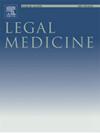Testing age progression technique: evaluation of reliability and accuracy
IF 1.4
4区 医学
Q3 MEDICINE, LEGAL
引用次数: 0
Abstract
Age progression is increasingly applied in forensic practice to assist in the identification of long-term missing persons, yet its reliability requires systematic validation.
This study analysed childhood and adult photographs of an Italian family to assess the accuracy of the technique. Eight images were examined: five portraying the parents and three children at age 2, and three depicting the parents and daughter at age 30. A morphological analysis of facial features (face shape, eyebrows, eyelid folds, nasal bridge and tip, lips) was performed to identify hereditary traits. Age progressions of the two sons were generated to age 30 and subsequently adjusted to their current ages (45 and 43 years). Reconstructions were created using Adobe® Photoshop, combining low-resolution parental photographs with high-resolution reference images.
Results showed variable accuracy: the progression of Brother 2 closely resembled his current appearance, whereas discrepancies were noted for Brother 1, particularly in nasal morphology, largely due to poor source resolution. Overall, accuracy improved with higher image quality and a larger number of reference photographs.
This validation demonstrates that age progression can approximate the real appearance of missing persons but emphasizes image quality as a critical limitation. Expanding datasets and refining morphological protocols are essential to increase its reliability in forensic casework.
试验年龄递进技术:可靠性和准确性评价
年龄递进法越来越多地应用于法医实践,以协助识别长期失踪人员,但其可靠性需要系统验证。这项研究分析了一个意大利家庭的童年和成人照片,以评估这项技术的准确性。研究人员检查了八幅照片:五幅是父母和三个两岁的孩子,三幅是父母和30岁的女儿。对面部特征(脸型、眉毛、眼睑褶皱、鼻梁和鼻尖、嘴唇)进行形态学分析以确定遗传性状。这两个儿子的年龄变化被生成到30岁,然后调整到他们现在的年龄(45岁和43岁)。使用Adobe®Photoshop创建重建,将低分辨率父母照片与高分辨率参考图像相结合。结果显示不同的准确性:兄弟2的进展与他目前的外观非常相似,而兄弟1的差异,特别是在鼻形态上,主要是由于源分辨率差。总的来说,更高的图像质量和更多的参考照片提高了精度。这一验证表明,年龄进展可以近似失踪人员的真实外观,但强调图像质量是一个关键的限制。扩大数据集和完善形态学协议是必不可少的,以提高其在法医案件工作的可靠性。
本文章由计算机程序翻译,如有差异,请以英文原文为准。
求助全文
约1分钟内获得全文
求助全文
来源期刊

Legal Medicine
Nursing-Issues, Ethics and Legal Aspects
CiteScore
2.80
自引率
6.70%
发文量
119
审稿时长
7.9 weeks
期刊介绍:
Legal Medicine provides an international forum for the publication of original articles, reviews and correspondence on subjects that cover practical and theoretical areas of interest relating to the wide range of legal medicine.
Subjects covered include forensic pathology, toxicology, odontology, anthropology, criminalistics, immunochemistry, hemogenetics and forensic aspects of biological science with emphasis on DNA analysis and molecular biology. Submissions dealing with medicolegal problems such as malpractice, insurance, child abuse or ethics in medical practice are also acceptable.
 求助内容:
求助内容: 应助结果提醒方式:
应助结果提醒方式:


